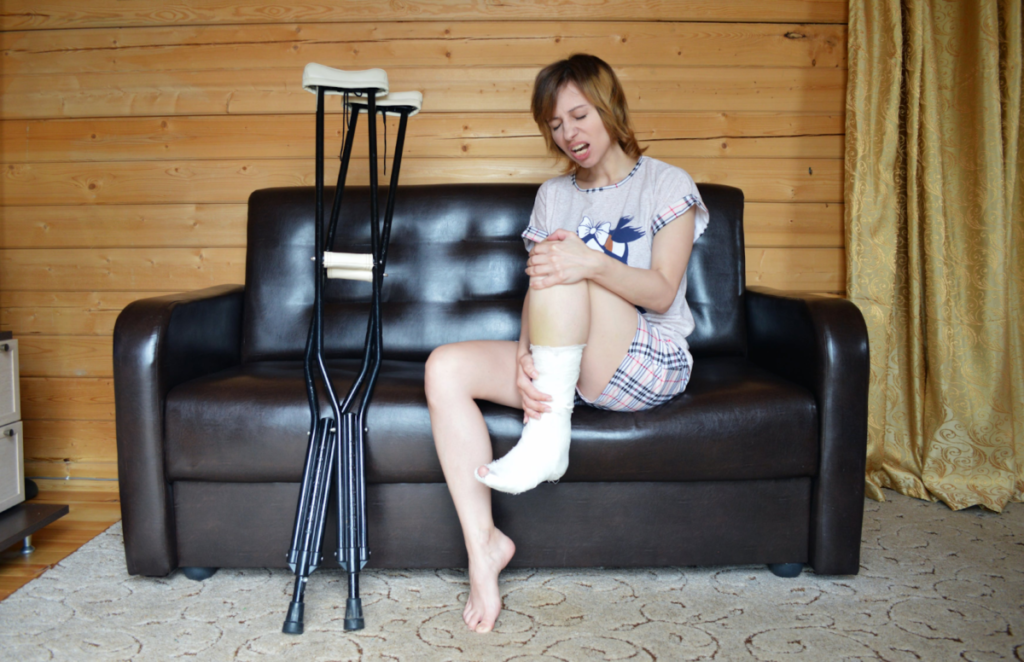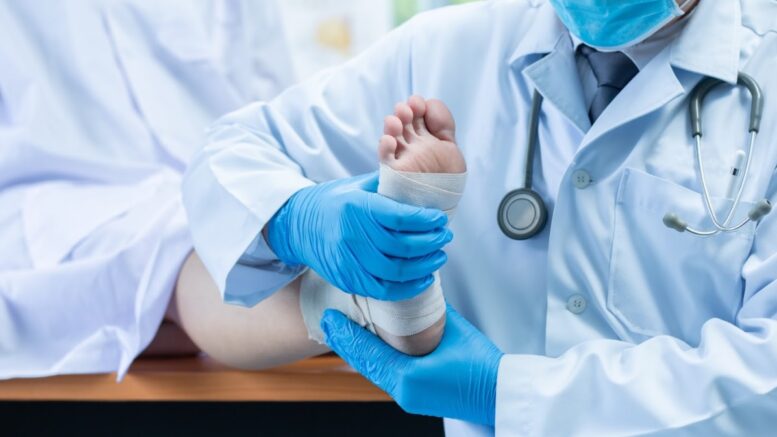Bone spurs are bumps that generally form in the areas where bones meet. Most of them appear in hands, feet, neck, and knees. This condition is commonly associated with people aged 60 and above, but the younger generation could also have bone spurs because of arthritis and degenerative joint diseases.
Generally, bone spurs aren’t painful. However, they could be painful when frequently rubbed with other bones or hard objects. Suppose you’re diagnosed with bone spurs. In that case, you may want to know the nature and causes of bone spurs. In addition, you may look for possible treatment options to get rid of them. For these purposes, here’s an article to guide you. So, read on!
Causes And Symptoms Of Bone Spurs
In most cases, bone spurs are caused by the attempts of your body to repair the damaged parts of the bones. Typically, conditions such as arthritis, joint problems, and similar conditions. Deficiencies in calcium, Vitamin D, and magnesium may also increase the possibility of having this condition. Apart from these, minor injuries, including fractures and bruising, may also cause this condition.
Generally, you may experience the following symptoms if you have bone spurs:
- tingling in arms and legs
- muscle cramps
- pain in the affected joint
- stiffness and numbness
Treatment Options
Bone Spur Surgery
Bone spur surgeries may include one or more cuts to remove the bony growths in the affected area. Although this is an invasive way of removing the spurs, it’s highly effective and may prevent future problems, such as bone spur regrowth. You may consult bone and foot doctors for better ideas about surgeries and similar solutions, such as those from https://www.easternidahofootclinic.com/ and others.
Recovering after bone spur surgery may be up to a month. Generally, surgeons can remove the sutures after a couple and weeks, and patients may wear their shoes comfortably after a month. Most people only choose surgery if the non-invasive options seem ineffective and the pain becomes unbearable.
One of the highly successful types of bone spur surgery is endoscopic foraminotomy. Compared to most bone spur surgeries and can work under a local anesthetic. The surgery works with a small incision through a tiny tube where the surgeon accesses the spur.
Endoscopic foraminotomy is a same-day procedure in most cases, so patients could just go home after their surgery. Furthermore, they feel relieved immediately after the operation. Patients may still need to practice preventative measures to avoid regrowth for best results.
Ice Packs
Custom ice packs and cold compresses help in reducing inflammation. This way, you can numb the area and temporarily ease the spur pain and discomfort. To improve the condition, you may apply the ice on the affected area for up to 15 minutes. However, the comfort may be short-lived and may need a more consistent ice application.
In applying ice packs, you must wrap them with cloths or similar covers so they’d avoid sticking into your skin. You may incorporate this option with other proven solutions for burn spurs for best results.

Over-The-Counter Pain Relievers
To reduce swelling and counter pain, you may take over-the-counter medications, such as acetaminophen, naproxen sodium, and ibuprofen. Before taking any of these drugs, you may need to ensure that you don’t have any history of allergy to any medicine, so they’d provide more benefits than harm.
Rest
Since bone spurs rubbing other bones may cause pain and inflammation, you may need to take a rest from time to time. This way, you give time for the bone spurs to normalize and recede their discomfort. In resting your affected limbs, you can put your affected foot over the unaffected one. In addition, you may need to lay it in a bed or chair where it can rest properly.
Supportive Shoes Or Shoe Inserts
This option is intended for people with foot problems, including bone spurs. Wearing supporting shoes and shoe inserts is an excellent way to allow clearance for swelling. In many cases, this supplements major treatment options to speed up healing. In choosing a supportive shoe, you may consider opting for the types with a rounded shape and a properly cushioned heel cup to avoid aggravating your bone spurs.
In selecting shoe inserts, you may start with knowing your exact foot size, including the width and length. You may choose the ones that could replace the footbed and can relax your foot in the sole. To maximize the insole’s cushioning effect on your bone spurs, you may also consider your arch type.
Weight Reduction
Losing weight also supplements the dissolving of bone spurs as it reduces the pressure on the affected area. In addition, being overweight may increase one’s body, giving more pressure to the bone spurs. In lowering weight, you may aim for your ideal body mass index using your age, height, and sex as the factors.
Ultrasound Therapy
This non-invasive option uses a hollow tip needle to insert the affected part’s skin. The tip releases low amplitude/high-frequency sound waves that work on the scar tissue. As a result, it enhances the blood flow in the affected area, reducing the swelling in the process.
Generally, this therapy takes place from two to three minutes. Ultrasound therapy is more affordable than most major treatment options and requires no sedation. Above all, it has minimal to zero pain and increases fast tissue regeneration that replaces hardened tissues.
Physical Therapy
This therapy doesn’t just treat bone spurs but also aids in keeping your feet healthy and the other body parts in their best condition. It may include the deep massaging of the painful areas and their immediate parts.
This massage type uses slow yet potent strokes to reach the deeper muscle layers. Deep tissue massage rehabilitates injured muscles and bones, reduces pain, and relieves stress. For best results, you may have deep tissue massage every week until the pain subsides.
Physical therapy may include rest periods and stretching activities, apart from deep tissue massage. For more ideas about the appropriate exercises for your bone spurs, you may delve into the following:
For Heel Spurs
You may do a foot flex by pulling your toes back toward your shin for 30 to 90 seconds. You may use an elevated platform to pivot your foot properly. After this, you stretch your calf muscles by standing on the call of your foot. You need to hold this position for a minute or so. Another alternative is to roll a golf ball under your foot. ·
For Bone Spurs On The Other Areas
You may do hand and wrist exercises for the bone spurs in these areas to improve mobility and alleviate pain. If the affected parts are too painful, you may need to slow down the process. You may do it gradually and increase the succeeding stretching times until your joints get used to it.

Prescription Medication
In cases when bone spurs become chronic, patients are provided with prescribed medication. This may include steroid injections, such as cortisone to the focused area or in the spine. Doctors may also apply muscle relaxants nonsteroidal anti-inflammatory drugs (NSAIDs) to relieve stiffness and pain depending on your condition.
Some patients prefer spinal injections because they can give immediate relief. These injections are coupled with activity modification, stretching, and other supplementary treatment options to maximize the healing process for better results.
Dry Needling
Generally, this technique is incorporated into a broader physical therapy plan. Yet, it can also be applied as a standalone approach. The practitioner uses tiny skin pricks to stimulate the trigger points or the pain-causing nerves in this process. When these pricks are inserted into the area around the spurs, the muscles become relaxed, thus relieving the pain.
While the effects of dry needling differ in every case, this process is known to provide positive results in most cases, from mild to superb healing. Generally, the comfort and effectiveness depend on the body’s response, length and frequency of sessions, and the technique’s suitability. Usually, positive results show after 24 hours.
When To Go To A Surgeon?
While some conservative treatment options could be effective, especially when the bone spurs are in their initial stage, surgery may be the only option in some cases. Generally, people with bone spurs only go to surgeons when their condition becomes too painful. Others consider weakness and immobility factors to consider whether or not to go to a surgeon.
If you choose between non-invasive and invasive options, you may think about the degree of pain. You may also base your decision on where the bone spurs appear. If they show up in joints, such as wrists and ankles, you probably will go to a surgeon as you may become paralyzed if you neglect this issue.
Wrapping Up
Suppose you’re suffering from bone spurs in some parts of your body. In that case, you may be looking for the treatment options that suit you. To make your condition better, you may settle with the conventional ones, such as stretching, ice applications, and others.
If these won’t be enough, you could choose the less traditional ones that often include surgery. Yet, always consider that your treatment will be at its best when coupled with other conventional options and some measures to prevent recurring issues.
